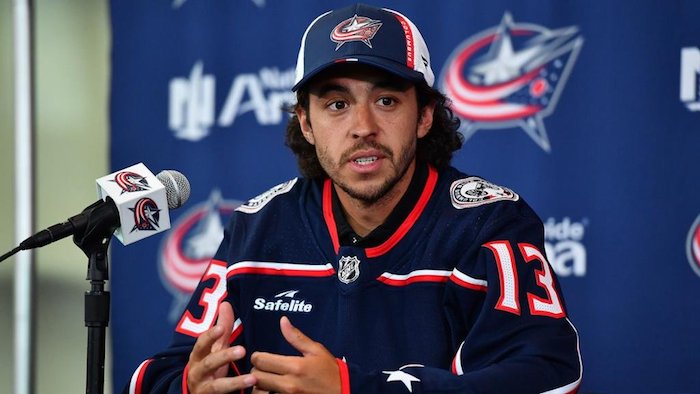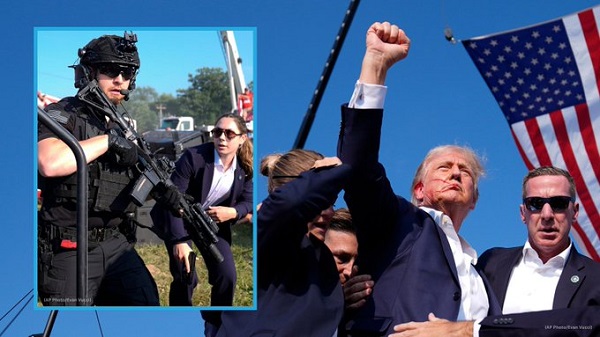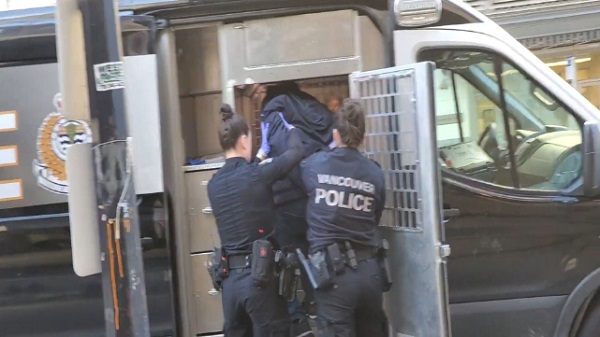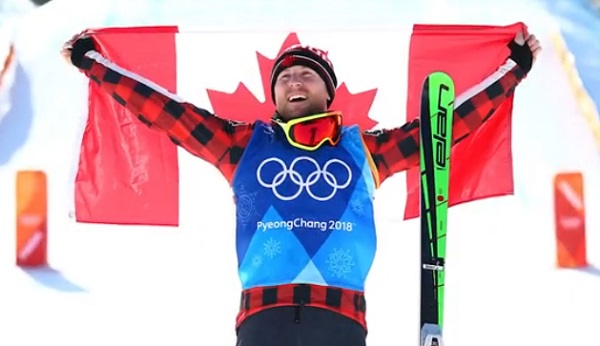Bruce Dowbiggin
Travelling Music: Johnny B. Goode, Johnny B. Gone

[Sign up today for Not The Public Broadcaster newsletters. Hot takes and cool slants on sports and current affairs. Have the latest columns delivered to your mail box. Tell your friends to join, too. Always provocative, always independent. ]
“And that’s the news for now, I’ll be back here at 11, unless a news station in Columbus offers me way less money… and I’ll probably go do that.—Calgary CBC TV anchor Andrew Brown

Hard to imagine. A player whose brilliant OT goal that won the Calgary Flames their first-round playoff series could go from rapturous applause to pariah status in eight weeks. But that is the saga of Johnny Gaudreau. “Johnny Hockey” is now Dear John in eyes of Flames fans who worshipped him so recently.
His heel turn in cooly rejecting those fans— “we were super excited with being able to sign here in Columbus”— has also created a firestorm in the media about homerism and Canada/ U.S. hockey sensitivities.
The story: The diminutive Gaudreau was a fourth-round Calgary draft pick who debuted in 2013. Deft with slick hands he was the team’s best offensive player since Jarome Iginla. He was also prone to disappearing on the ice, especially in big games. A 36-goal season in 2018-19 was followed by years of 18 then 19 goals. After scoring four goals in his first playoff year 2014-15 Gaudreau posted just four more playoff goals before this year. This antagonized Flames fans who periodically demanded he be traded for a bigger, more impactful player. There were frequent “Johnny Party” sightings in clubs and bars around town. He was the second coming of Dion Phaneuf as he enjoyed himself liberally.
The Flames were vexed, and, as the 29-year-old Gaudreau entered the final year of a contract, they were taking a wait-and-see approach. Gaudreau, a child of Canadian parents who grew up in New Jersey, bet on himself. They’d see what happened.
What happened was one of the greatest contract years ever in sports, when an pending free agent exceeds expectations by such levels that he puts himself at the very pinnacle of the pay scale. Gaudreau scored 40 goals with 115 points, thrusting himself into Hart Trophy candidacy. His 5-on-5 numbers led the NHL by a mile. His linemates fed off him, both scoring 42 goals themselves. The Flames won the Pacific Division.
In the opening series against hot Dallas goalie, Gaudreau provided the clincher with sensational shoreside top corner laser. Public opinion was now all for giving Gaudreau a max contract offer. The team made noises about doing just that to keep their franchise payer. But Gaudreau wasn’t buying. Maybe winning the Western Conference or the Stanley Cup could change things.

No one told Connor McDavid and the bitter provincial rivals from Edmonton. Even with goalie Mike Smith’s blunders, the Oilers systematically destroyed Calgary in five games. The Flames’ top line disappeared. Begging the question, would Gaudreau disappear permanently?
For a small Canadian city, the idea of not being able to hang onto their stars is existential. Edmonton has spent a king’s ransom to keep McDavid, Leon Draisaitl and Ryan Nugent Hopkins from skipping town. Coming on the heels of Calgary’s arena project collapsing, losing Gaudreau would be a gut punch to civic pride.
When news came that a now-married Gaudreau, awaiting the birth of his first child, wanted to be closer to home in New Jersey fans gulped. They’d seen the Gaudreau clan in the playoffs celebrating with him. They appeared tight-knit,. Who could compete with that? All the Flames could do was offer the most money.
Which they did. So imagine the saltiness of Calgary fans when, after leading the Flames management right to the final night before free agency they learned he was going nowhere near the east coast. He was going to the Columbus, Ohio— in the Midwest— for millions less than he’d have made in Alberta. To a team that’s as close to the bottom of the NHL as to the top.

Eric Duhatschek summed it the stunned reaction in The Athletic, “The fact that it took Gaudreau so long to choose effectively sabotaged the Flames’ off-season, because it closed so many possible Plan B options to the organization. Closer to home, but not close — because if close to home was the absolute priority, then he could have picked the New Jersey Devils, who also tabled an offer.
Columbus is more easily reached by private jet than Calgary, but it’s not as if he’ll be dropping into his mom’s house for dinner after a game or a practice — or getting emergency babysitting service if they need someone right this minute to help out on the home front.”
Other comments took a similar tack. No one begrudged the family angle, but when Gaudreau told Columbus media, “it didn’t matter where i was signing. Our decision was it was best for us not to go back to Calgary,” the divorce got nasty.
And so did the media sniping. In the New York Post Larry Brooks sneered, “The hysterical response to Johnny Gaudreau’s decision to leave millions on the table in Calgary and instead sign with Columbus was indeed just that. Players are routinely lambasted across the professional sports landscape for being greedy mercenaries. Now this one is being targeted for taking a road less traveled.”
On Barstool Sports, someone called The Rear Admiral summed up a scathing putdown with “Hell hath no fury like Canadian media (allegedly) scorned.” And those were the printable comments. “But when media members wail and stomp their feet because a fellow adult opts to work in a new location, well that’s a special kind of entertainment.”
What will the Flames do to replace Gaudreau at the last minute in free agency? Should they now dump his $9 million ex-linemate Matthew Tkachuk, too, and start a rebuild? The Flames (who wished him well publicly) are boxed in. The only certainty is that the hottest ticket of the season will be January 23 when Columbus visits Calgary. Don’t expect a love-in.
Bruce Dowbiggin @dowbboy is the editor of Not The Public Broadcaster . A two-time winner of the Gemini Award as Canada’s top television sports broadcaster, he’s a regular contributor to Sirius XM Canada Talks Ch. 167. Inexact Science: The Six Most Compelling Draft YearsIn NHL History, , his new book written with his son Evan, has been selected the eighth-best professional hockey book of all time by bookauthority.org . His 2004 book Money Players was voted seventh best, and is available via http://brucedowbigginbooks.ca/book-personalaccount.aspx
Bruce Dowbiggin
The Covid 19 Disaster: When Do We Get The Apologies?

Breaking: Drs. Bonnie Henry and Theresa Tam have been appointed to the Order of Canada in recognition of their role in the country’s response to the COVID-19 pandemic.
And so the game of covid liar’s poker has more winners. It’s like awarding the captain of the Titanic the Nobel Prize for his work on floatation. As we now know these two— and the other WHO finger puppets in Canada— made the Covid 19 episode worse, not better, with their prescription for panic, positives and punishment. Even as they knew the truth about the limits of the virus and the efficacy of vaccines they continued to spew fallacious PCR data on the extent of the sickness and who was at risk.
Put simply, to protect vulnerable seniors they said kids were also at great risk. Which was unconscionable.
In this they encouraged Justin Trudeau in his worst instincts, combining his father’s insouciant disregard for civil rights (sending in the police) with his mother’s mental stability. Propped up by Team Tam and its U.S. allies such as Anthony Fauci, this hysteria peaked with a sequestered PM crushing the Truckers Convoy’s vaccine protest with emergency measures and destruction of civil liberties.
Lest you wonder, this overreach was recognized at the time. Justice Maclean wrote at the trial of Convoy organizers, “Defendants & other persons remain at liberty to engage in a peaceful, lawful & safe protest”. On Feb. 16, he continued a no-honking order, again writing: “Defendants & other persons remain at liberty to engage in a peaceful, lawful & safe protest.”
The leaders of the Convoy, lynched by Canadian media’s phoney claims of right-wing American interference, are still fighting jail time on charges of nuisance. While violent criminals are routinely released on bail or absolved.
Justice Richard Mosley later concluded that while the convoy was a disruption of public order, it didn’t constitute a national emergency and invoking the act “does not bear the hallmarks of reasonableness — justification, transparency and intelligibility.” But in real time Team Tam made no attempts to correct the wilder misgivings about Covid (lockdowns, mandatory vaccines). Trudeau was given a hall pass. Needless to say the purchased media made things infinitely worse regurgitating these mistakes.
In short, they knew better but hid the truth. But why pick on Henry and Tam? Under Trudeau and his wingman Jagmeet Singh this was the golden age of lies and prevarications in Canada and the U.S. No apologies were ever offered when the truth emerged.
As we’ve noted before, Trudeau cried with a teddy bear carefully positioned over 751 alleged unmarked graves in a known Catholic cemetery that the local Cowessess band abandoned. The Liberal government knew the claim of 215 “children’s graves” was false, and still ran with it to get Trudeau his photo-op. Naturally the CBC Media Party played (and still plays) accomplice in this farce as the Canadian flag was lowered to half-mast for six months and Trudeau ratted out Canada at the UN as a genocidal state.
There were more, plenty more Trudeau scandals that media endorsed and then stood by even as the truth was revealed. SNC Lavalin. We Charity. Arrive Can app. Firing indigenous justice minister. Chinese drug infiltration/ money laundering. Nazi Celebrated in Parliament. Welcome To Canada immigration. Nova Scotia massacre. McKinsey Consultation. Blackface. And so on.
And were there apologies when it came time to make the Trudeau Liberals accountable? No, they staged a media circus over Donald Trump’s assertion of 51st state. All the fake news and deliberate lies went poof, allowing Mark Carney to seamlessly assume the PM job.

Lest We Forget Pt. 2 it was not exclusive to Canada. As we are now learning: Barack Obama and Joe Biden sat in an August 3, 2016 Situation Room briefing and said, yeah, let the highest officials in our administration fabricate evidence to frame the opposing party candidate Donald Trump. Obama. Biden. Comey. McCabe. Strzok. Page. Rice. Etc.
Knowingly using the faked Clinton campaign ‘Steele Dossier’ hoax, they launched a federal investigation into the Trump presidential campaign that lasted three years after Trump was sworn in as the nation’s 45th President. Arresting and jailing his partners and colleagues. Inventing fake stories for their media enablers. Let’s repeat that. Saint Obama knew there was criminal activity in the process but let his henchmen try to fix an election.

And when the ruse was uncovered no one apologized. No one in authority was fired or jailed. The Pulitzer Prizes awarded to the NT Times and Washington Post for disseminating the DEMs scandal were not rescinded. Nor were they given back by the lying newspapers.
The concerted frauds of the same U.S. DOJ, FBI and State Departments were fed by media and accepted by gullible publics in Canada and America. The fantastical 2020 election results were likewise drummed into the public irrespective of the sudden “appearance” of 27 million new votes during a pandemic.
It was all a fitting preamble to the 2020-2024 Biden senility scandal with Democrats running a man they knew was in full dementia. In the 2020 election Biden was hidden from public view, the better to let media attack Trump for spurious charges launched by partisan DNC attorneys in Georgia, New York and DC. Even then it took the suppression of Hunter Biden’s incriminating laptop just prior to the election to get his father elected.

The dance of denial continued in Biden’s term as he physically and mentally deteriorated before the American public. But inquiries about who was running the government if not Biden were harshly suppressed. Media lackeys noted he was sharp as a tack mentally and in tip-top physical condition when he wasn’t falling down stairs.
It took the stunning 2024 debate debacle with Trump to strip away the lies about Biden’s health, now said to be advanced prostate cancer and Parkinson’s. The media, caught in their own lies about Biden’s condition, offered no apologies and tried to blame Biden’s stutter for the performance.. Right.
These were the two greatest U.S. hoaxes from people who’d cried hoax incessantly. They were hardly the only abuse of public trust. Some of the perpetrators are said to now be under investigation— even as they hand out awards to each other. The media’s credibility is shattered and yet they still blame others. Jaded voters are taking a “we’ll see” approach. But expectations of any change in DC or Ottawa are limited.
As Stephen Taylor posted on X: “Turns out for Liberals, ‘elbows up’ just means ‘noses up’ like it always has.”
Bruce Dowbiggin @dowbboy is the editor of Not The Public Broadcaster A two-time winner of the Gemini Award as Canada’s top television sports broadcaster, his new book Deal With It: The Trades That Stunned The NHL And Changed hockey is now available on Amazon. Inexact Science: The Six Most Compelling Draft Years In NHL History, his previous book with his son Evan, was voted the seventh-best professional hockey book of all time by bookauthority.org . His 2004 book Money Players was voted sixth best on the same list, and is available via brucedowbigginbooks.ca.
Bruce Dowbiggin
Eau Canada! Join Us In An Inclusive New National Anthem

This past week has seen (some) Canadians celebrating their heritage— now that Mike Myers has officially reinterpreted Canadian culture as a hockey sweater and Mr. Dressup. This quick-change was so popular that Canadian voters even forgot an entire decade of Justin Trudeau.
In the United States, the people who elected Donald Trump– and not Andrew Coyne– to run their nation celebrated Independence Day with stirring renditions off The Star Spangled Banner, although few could surpass the brilliant performance of the song by the late Whitney Houston at the 1991 Super Bowl.
The CDN equivalent is some flavour of the month changing the words to O Canada at the Grey Cup game. Canada’s national anthem has always been open to interpretation by people who may or may not have Canada in their hearts. At the 2023 NBA All Star Game Canadian chanteuse Jully Black became the latest singer to attempt a manicure to the English lyrics of O Canada, penned for the 1880 Saint-Jean-Baptiste Day ceremony ( Calixa Lavallée composed the music, after which words were written by the poet and judge Sir Adolphe-Basile Routhier. The English lyrics have “evolved” over the years, just like the dress code for the CDN PM..)

Black amended the first line from “our home and native land” to our home ON native land”. Because something-something. But this creative license is nothing new. Unlike Chris Stapleton, Marvin Gaye or Whitney Houston with the Star Spangled Banner, interpreters of O Canada have seen fit to amend the lyrics to their sensibilities. Roger Doucet, famed anthem singer of the Montreal Canadiens in the 1970-80s, tried to add the words “we stand on guard for truth and liberty” in place of the first “we stand on guard for thee”.
In 1990, having nothing better to do, Toronto City Council voted 12 to 7 in favour of recommending that the phrase “our home and native land” be changed to “our home and cherished land” and that “in all thy sons command” be partly reverted to “in all of us command”. (The latter was officially adapted.)
While those attempts had mixed outcomes it appears it’s just a matter of time till Ms. Black’s class-conscious culling of the words is accepted. Being generous we here at IDLM thought we’d short-circuit piecemeal attempts to create a throughly Woke version of the anthem that would last till the latest fad come along. Herewith our 2023 definitive O Canada that even— maybe only— Justin Trudeau could love:
“O Canada” (Ignores the French fact in our culture) Change to “Eau Canada”
“Our home on native land” (ignores indigenous land claims) Change to “Get off our land, settlers”
“True patriot love in all of us commands” (Only true patriot love? There were officially 78 kinds of relationships in Trudeaupia. And commanding love?) Change to “Love the one you’re with”.
“With glowing hearts we see thee rise” (rise suggests triumph of white triumphalist dogma) Change to “Non judgementally we oppose the crushing impacts of Euro-based autocracy”
“The true north strong and free” (How can anyone be strong or free when we support America’s killing fields?) Change to “Heteronormative thinking must be stamped out at our borders. If we even have borders anymore.”
“From far and wide” (Body shaming) Change to “Obesity is a disease that is not helped by putting it in the national anthem.”
“O Canada” (biased against A, B, AB blood types) change to “Science Must Be Believed”
“We stand on guard for thee” (Spreads hate against the non ableist community) Change to “Please remain seated.”
“God keep our land” (God? God? What is this, the Reformation) “Change to “It’s your thing”
”Glorious and free” (Glorious harkens to the bourgeois subjugation of Indigenous thought processes by white Christian priests) Change to “A genocidal state if there ever was one”.
“O Canada we stand on guard for thee/
O Canada we stand on guard for thee” The denial of trans rights is used twice here to emphasize the intolerable burdens faced by people of the LGBTQ2R community as they seek respect and compensation for the evils of the founding oppressors.) Change to “Eau Canada, after 6.5 hours of intensive lectures on the gender, race and dissociative application of class war on your citizens you may someday come to understand that this song is a manifestation of your bigotry and exploitation of minorities— and why rhyming lines like “thee and free” is the work of the devil or J.K. Rowling, whomever comes to mind first.”

There. That wasn’t so tough, was it? Flows trippingly off the tongue like Mark Carney refusing a special inquiry into China buying the electoral process. Or perhaps we should simply accept a literal translation of the original French lyrics:
“O Canada!
Land of our ancestors
Glorious deeds circle your brow
For your arm knows how to wield the sword
Your arm knows how to carry the cross;
Your history is an epic
Of brilliant deeds
And your valour steeped in faith
Will protect our homes and our rights.”
Yikes. That’s downright fascistic. But it’s Quebec, and we have to allow them their peccadilloes. So circle your brow with glorious deeds, grab a cross and a sword and valour steeped in faith. And remember we must be adaptable in the new era.
Unless it’s Alberta using the adapting to fuel its CO2-belching machines. In which case it’s man the battlements and follow Mike Myers into the fight.
Bruce Dowbiggin @dowbboy is the editor of Not The Public Broadcaster A two-time winner of the Gemini Award as Canada’s top television sports broadcaster, his new book Deal With It: The Trades That Stunned The NHL And Changed hockey is now available on Amazon. Inexact Science: The Six Most Compelling Draft Years In NHL History, his previous book with his son Evan, was voted the seventh-best professional hockey book of all time by bookauthority.org . His 2004 book Money Players was voted sixth best on the same list, and is available via brucedowbigginbooks.ca.
-

 Business2 days ago
Business2 days ago‘Experts’ Warned Free Markets Would Ruin Argentina — Looks Like They Were Dead Wrong
-

 International2 days ago
International2 days agoSecret Service suspends six agents nearly a year after Trump assassination attempt
-

 Business2 days ago
Business2 days agoCarney government should recognize that private sector drives Canada’s economy
-

 Alberta1 day ago
Alberta1 day agoAlberta school boards required to meet new standards for school library materials with regard to sexual content
-

 Environment1 day ago
Environment1 day agoEPA releases report on chemtrails, climate manipulation
-

 Crime1 day ago
Crime1 day agoSweeping Boston Indictment Points to Vast Chinese Narco-Smuggling and Illegal Alien Labor Plot via Mexican Border
-

 Business2 days ago
Business2 days agoCannabis Legalization Is Starting to Look Like a Really Dumb Idea
-

 Bruce Dowbiggin2 days ago
Bruce Dowbiggin2 days agoThe Covid 19 Disaster: When Do We Get The Apologies?






